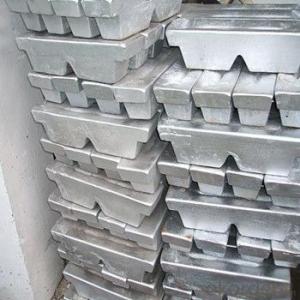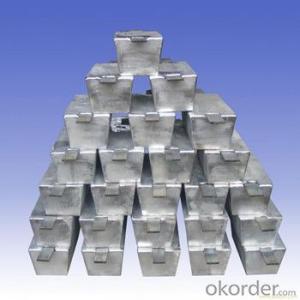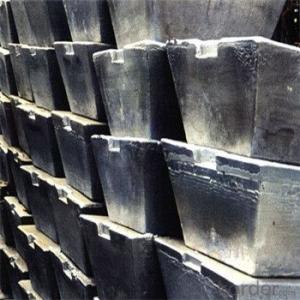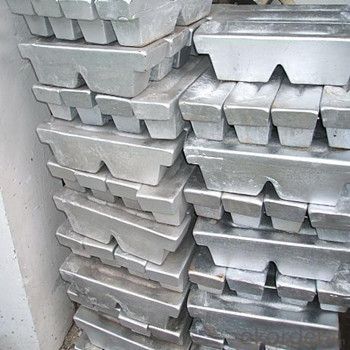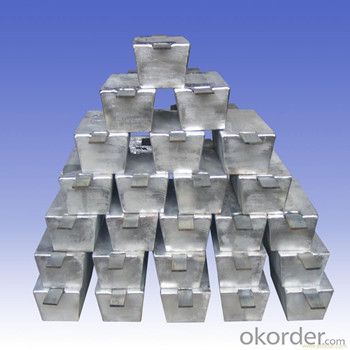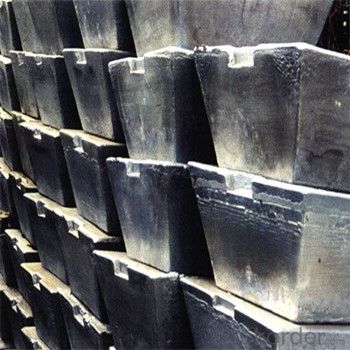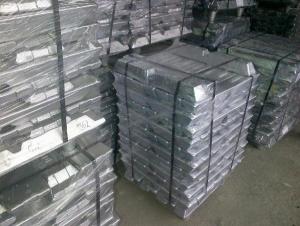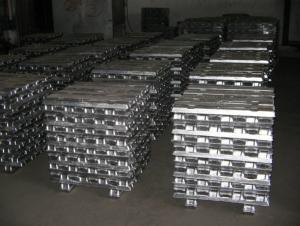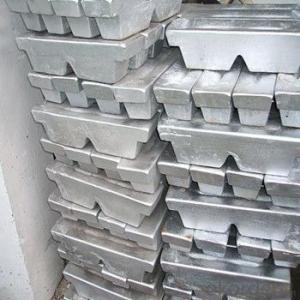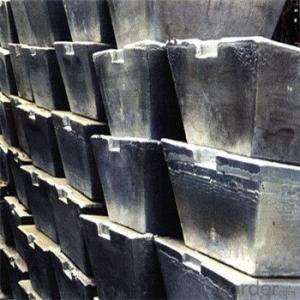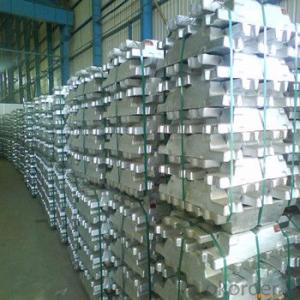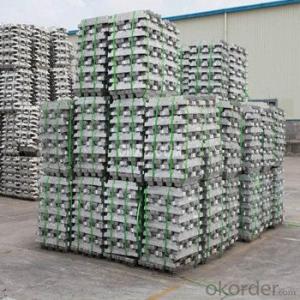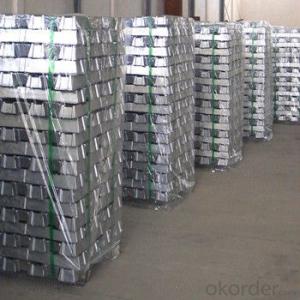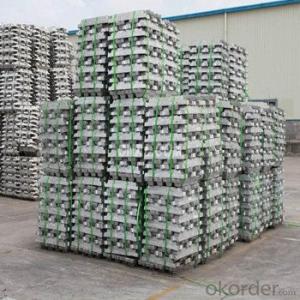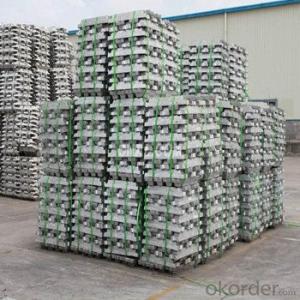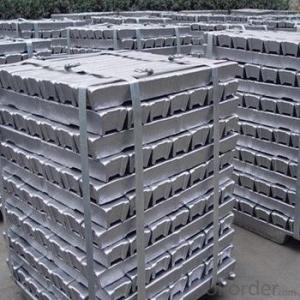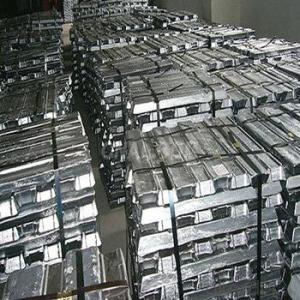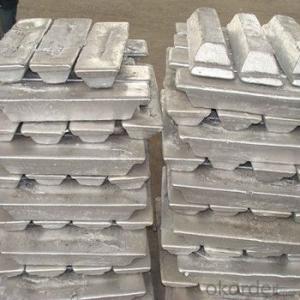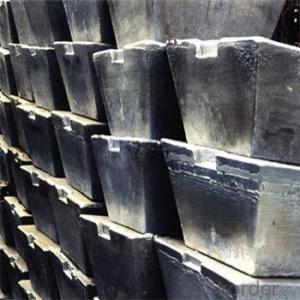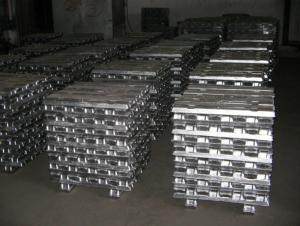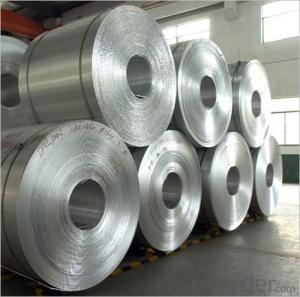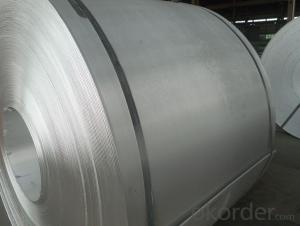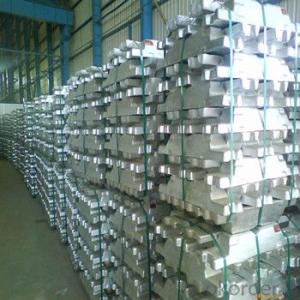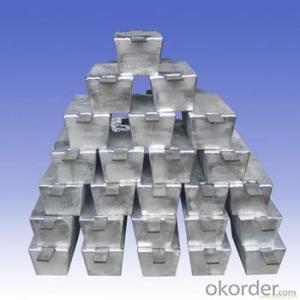Aluminum Ingot with 99.7%~ 99.9% Wholesale from Mills
- Loading Port:
- China main port
- Payment Terms:
- TT OR LC
- Min Order Qty:
- 1000 m.t.
- Supply Capability:
- 10000 m.t./month
OKorder Service Pledge
OKorder Financial Service
You Might Also Like
Pure Aluminum Ingot Used for Industry
1.Structure of Aluminum Ingot Description
Aluminum Ingot is with the AL as the main chemical composition. Aluminum Ingot is used for industry,such as automobile,pinning and weaving,electron broadly and so on. Aluminum Ingot has the following advantages: easy control and operation, fast melting.
2.Main Features of the Aluminum Ingot
•High Purity
•Easy control and operation
•High strength
•Fast melting
•Competitive price
•Best Service
3. Aluminum Ingot Images
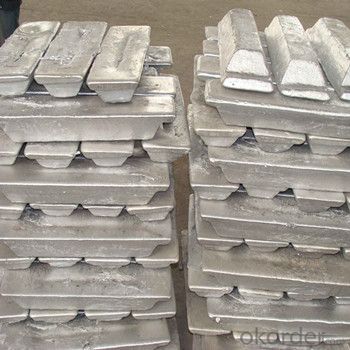
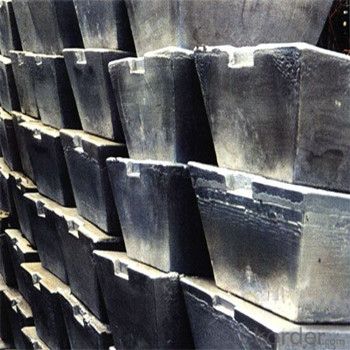
4. Aluminum Ingot Specification
Grade | Chemical Composition % | |||||||||
Al≥ | impurities ≤ | |||||||||
Si | Fe | Cu | Ga | Mg | Zn | Mn | others | Sum | ||
Al99.9 | 99.90 | 0.50 | 0.07 | 0.005 | 0.02 | 0.01 | 0.025 | - | 0.010 | 0.10 |
Al99.85 | 99.85 | 0.80 | 0.12 | 0.005 | 0.03 | 0.02 | 0.030 | - | 0.015 | 0.15 |
Al99.7 | 99.70 | 0.10 | 0.20 | 0.010 | 0.03 | 0.02 | 0.030 | - | 0.030 | 0.30 |
Al99.6 | 99.60 | 0.16 | 0.25 | 0.010 | 0.03 | 0.03 | 0.030 | - | 0.030 | 0.40 |
Al99.5 | 99.50 | 0.22 | 0.30 | 0.020 | 0.03 | 0.05 | 0.050 | - | 0.030 | 0.50 |
Al99.00 | 99.00 | 0.42 | 0.50 | 0.020 | 0.03 | 0.05 | 0.050 | - | 0.050 | 1.00 |
5.FAQ of Aluminum Ingot
We have organized several common questions for our clients,may help you sincerely:
①How about your company?
A world class manufacturer & supplier of castings forging in carbon steel and alloy steel,is one of the large-scale professional investment casting production bases in China,consisting of both casting foundry forging and machining factory. Annually more than 8000 tons Precision casting and forging parts are exported to markets in Europe,America and Japan. OEM casting and forging service available according to customer’s requirements.
②How to guarantee the quality of the products?
We have established the international advanced quality management system,every link from raw material to final product we have strict quality test;We resolutely put an end to unqualified products flowing into the market. At the same time, we will provide necessary follow-up service assurance.
③How long can we receive the product after purchase?
In the purchase of product within three working days, We will arrange the factory delivery as soon as possible. The pecific time of receiving is related to the state and position of customers.Commonly 7 to 10 working days can be served.
- Q: The difference between electrolytic aluminium, alumina and aluminium ingot
- Two, the production process is relatively speaking, the process of alumina production is more complex, the production of a ton of aluminum ingots require about two tons of alumina, the product must be expensive to produce aluminum ingots.
- Q: Aluminum is pure aluminum expensive, or aluminum alloy expensive, aluminum ingot expensive, aluminum just expensive
- Aluminum ingots are cheap, followed by pure aluminum, and then aluminium alloys
- Q: What is the process for smelting aluminum ingots?
- Smelting aluminum ingots consists of several steps. To start, bauxite ore, which serves as the main aluminum source, is mined and refined to extract impurities. The refined bauxite is then converted into alumina using the Bayer process. Following that, a large electric furnace is utilized to combine the alumina with cryolite and other additives. This mixture is subjected to extremely high temperatures, reaching approximately 1,800 degrees Celsius. The intense heat causes the alumina to melt and separate into aluminum and oxygen. Subsequently, the molten aluminum is tapped from the furnace and transferred to either a holding furnace or a ladle. During this stage, it is common to alloy the aluminum with other metals to enhance its properties. Common alloying elements include magnesium, silicon, copper, and zinc. Once the desired alloy composition is attained, the molten aluminum is poured into molds to create ingots. These molds are typically constructed from steel and can vary in size and shape based on specific requirements. After the aluminum has solidified and cooled, the ingots are extracted from the molds and undergo further processes such as heat treatment or rolling to achieve the desired mechanical properties and shape. In summary, the smelting process of aluminum ingots encompasses mining and refining bauxite, converting it into alumina, melting the alumina to separate aluminum and oxygen, alloying the molten aluminum, pouring it into molds, and finally processing the solidified ingots to achieve the desired properties.
- Q: What are the advantages of using aluminum ingots in the production of aircraft structures?
- There are several advantages of using aluminum ingots in the production of aircraft structures. Firstly, aluminum is lightweight, which helps to reduce the overall weight of the aircraft. This, in turn, improves fuel efficiency and reduces operating costs. Secondly, aluminum has excellent corrosion resistance, ensuring the longevity and durability of the aircraft structures. Additionally, aluminum is easily formable and weldable, allowing for complex and intricate designs to be achieved. Lastly, aluminum is abundantly available and cost-effective, making it a preferred choice for aircraft manufacturers.
- Q: Sincerely ask predecessors to tell me about the processing of aluminum ingots to doors and windows, curtain walls, aluminum profiles, the general process and about the process!
- The first cast aluminum rod, generally with the same level hot top casting equipment, casting equipment Woge Gustave America more now.
- Q: Can aluminum ingots be used in 3D printing?
- Yes, aluminum ingots can be used in 3D printing. Aluminum is a commonly used material in additive manufacturing processes such as selective laser melting (SLM) or direct metal laser sintering (DMLS). By melting the aluminum ingots and layering it in a precise manner, it is possible to create complex and durable 3D printed metal parts.
- Q: Aluminum sold alone, high benefit ah, why do aluminum ingot?
- No, aluminium powder is made of aluminium ingots
- Q: What is the lifespan of aluminum ingots?
- The durability and corrosion resistance of aluminum ingots make them suitable for long-term use, with their lifespan being influenced by factors such as storage conditions, handling practices, and environmental factors. When stored correctly and shielded from moisture and other corrosive elements, aluminum ingots can endure for several decades. They can maintain their structural integrity and physical properties over an extended period, rendering them valuable in various industries. In addition, aluminum ingots can be recycled and reused, further lengthening their lifespan. Through the recycling process, used aluminum products can be transformed back into ingots, which can then be employed in the production of new items. Overall, the longevity of aluminum ingots is relatively high, and with proper care and maintenance, they can fulfill their intended purpose for many years.
- Q: How are aluminum ingots used in the production of architectural facades?
- Aluminum ingots play a crucial role in the production of architectural facades. These ingots are the primary raw material used to manufacture various aluminum products, including facades. To begin with, the ingots are melted and then cast into different shapes and forms, such as sheets or extrusions, depending on the design requirements of the facade. This casting process allows for customization and flexibility in creating architectural elements with different sizes, profiles, and finishes. Once the aluminum is transformed into its desired form, it undergoes further processing, such as cutting, bending, and machining, to achieve the specific design details required for the facade. This flexibility allows architects and designers to create intricate patterns, shapes, and textures, enhancing the overall aesthetic appeal of the building's exterior. Additionally, aluminum ingots possess excellent strength-to-weight ratio and corrosion resistance properties. These characteristics make aluminum an ideal choice for architectural facades as it can withstand harsh weather conditions, including heavy rain, strong winds, and extreme temperatures, without compromising its structural integrity. Moreover, aluminum facades are known for their durability and low maintenance requirements. The corrosion resistance of aluminum ensures that the facade can retain its original appearance for an extended period, reducing the need for frequent repairs or replacements. Furthermore, aluminum is a sustainable material as it can be recycled repeatedly without losing its quality. This recyclability aspect makes it an environmentally-friendly choice for architectural facades, aligning with the increasing focus on sustainable construction practices. In conclusion, aluminum ingots are essential in the production of architectural facades due to their versatility, strength, durability, and sustainability. The ability to mold aluminum into various shapes and forms allows for the creation of visually appealing and functional facades that withstand the test of time and contribute to sustainable building practices.
- Q: What are the different heat treatment processes for aluminum ingots?
- Some of the different heat treatment processes for aluminum ingots include annealing, solution heat treatment, precipitation hardening, and quenching.
Send your message to us
Aluminum Ingot with 99.7%~ 99.9% Wholesale from Mills
- Loading Port:
- China main port
- Payment Terms:
- TT OR LC
- Min Order Qty:
- 1000 m.t.
- Supply Capability:
- 10000 m.t./month
OKorder Service Pledge
OKorder Financial Service
Similar products
Hot products
Hot Searches
Related keywords
